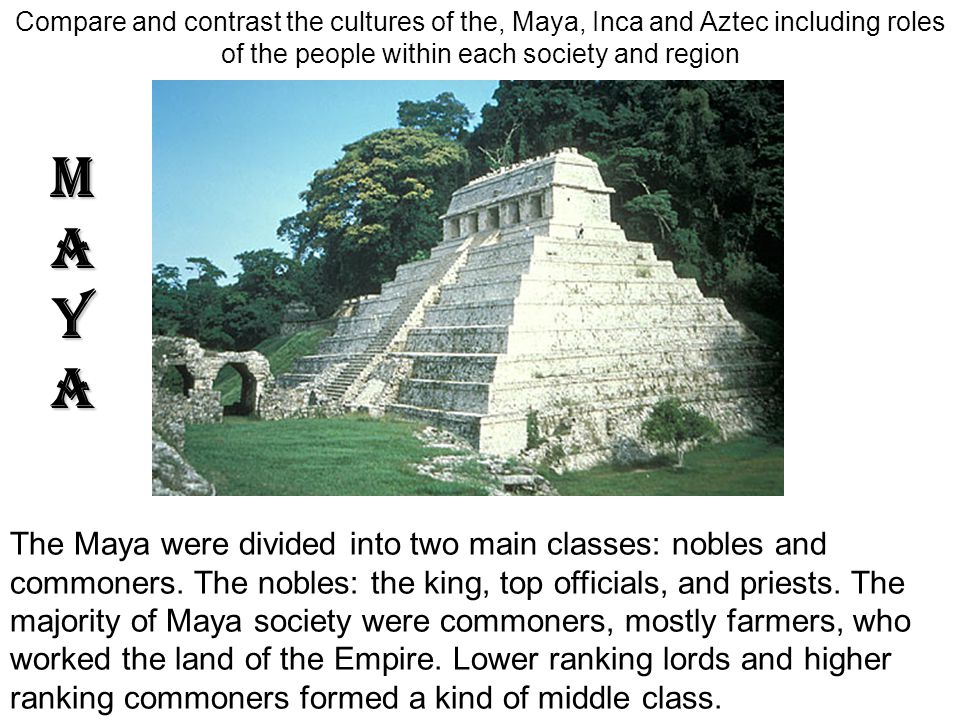The article compares and contrasts the Aztec and Inca civilizations, two of the most advanced ancient civilizations in the world. Despite never coming in contact with each other, the two civilizations developed similar cultures, technology, and social structures. The article delves into the differences and similarities in their religious beliefs and practices, economies, and political organizations. While both civilizations were agricultural-based, with a trading system in place, the Aztecs were polytheistic and centralized, while the Incas worshipped a supreme god and were more decentralized. The article’s analysis provides insight into the complex nature of early culture and how civilizations shared similar processes of growth, development, and organization.
The Aztecs vs. The Incas: A Comparison of Two Ancient Civilizations
Introduction
The Aztec and Inca civilizations were two of the most advanced ancient civilizations in the world. Despite never coming in contact with each other, the Aztecs and Incas developed similar cultures, technology, and social structures. In this article, we will compare and contrast the Aztec and Inca civilizations in terms of their religion, economy, and political organization.
Religion
Religion played a significant role in the Aztec and Inca civilization. However, the two civilizations had different religious beliefs and practices. The Aztecs had a polytheistic religion, which means they worshipped many gods. They believed that their gods controlled every aspect of life, from the weather to fertility, and required regular human sacrifice to appease them. In contrast, the Inca civilization worshipped a supreme god named Inti, who they believed was the god of the sun. Other gods and goddesses were also worshipped. However, the Inca religion was more focused on individual behavior and ethics than the Aztecs.
Economy
The economy of the Aztec and Inca civilizations were based on agriculture. The Incas were known for using a system called Terracing, which allowed them to farm on steep hillsides. They also used a system of roads to transport goods efficiently. The Aztecs, on the other hand, used a system called Chinampas, which involved creating small islands in the middle of lakes to farm on. They also used a system of canals to transport goods.
Both civilizations had a trading system. The Aztecs traded goods such as pottery, cotton, and gold, while the Incas traded goods such as wool, silver, and potatoes. However, the Inca civilization was more socialist, and people were not allowed to own private property. Resources were distributed equally among the people, and the state controlled the economy.
Political Organization
The political organization of the Aztec and Inca civilizations was different. The Aztec civilization was more centralized, with a ruler known as the Emperor who had authority over a large empire. The emperor was considered a god and had absolute power. Below him were governors who controlled smaller regions.
In contrast, the Inca civilization was more decentralized. The emperor controlled a large portion of the empire, but power was also distributed among local leaders. The Inca civilization also had a complex societal structure that was based on the Inca’s belief in the origin of their people from the sun.
Conclusion
In conclusion, the Aztec and Inca civilizations were two of the most advanced early civilizations in the world. Both civilizations had similar technological advances and social structures, but their religious practices, economy, and political organization are what set them apart. The Aztecs were polytheistic and had a centralized political system, while the Incas worshipped a supreme god and had a more decentralized political system. Both civilizations were agricultural-based, with a trading system in place. The comparison and contrast of these two remarkable ancient civilizations provide a fascinating insight into the complex nature of early culture and how, despite varying approaches to religion, economy, and politics, many civilizations shared similar processes of growth, development, and organization.
